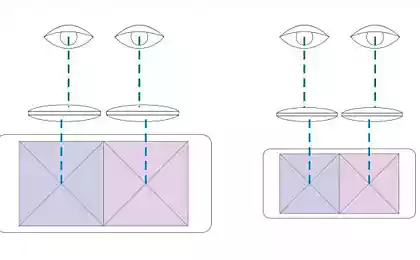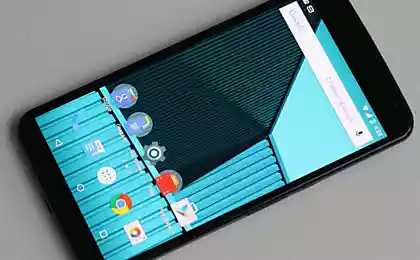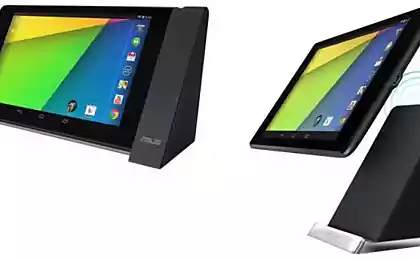463
A new way of charging your smartphone in seconds
A team of scientists from the nanotechnology Centre of the University of Central Florida (UCF) have developed a new method of making flexible supercapacitors. They accumulate more energy, and no damage is kept more than 30 thousands of charge cycles. A new method of creating nanoindentation can become a revolutionary technology in the production of smartphones, and electric vehicles.
The creators believe: if we replace the usual batteries new nanoconductors, any smartphone fully charged in just a few seconds. The owner may not think every few hours about where he would charge the smartphone: the device will not run out during the week.
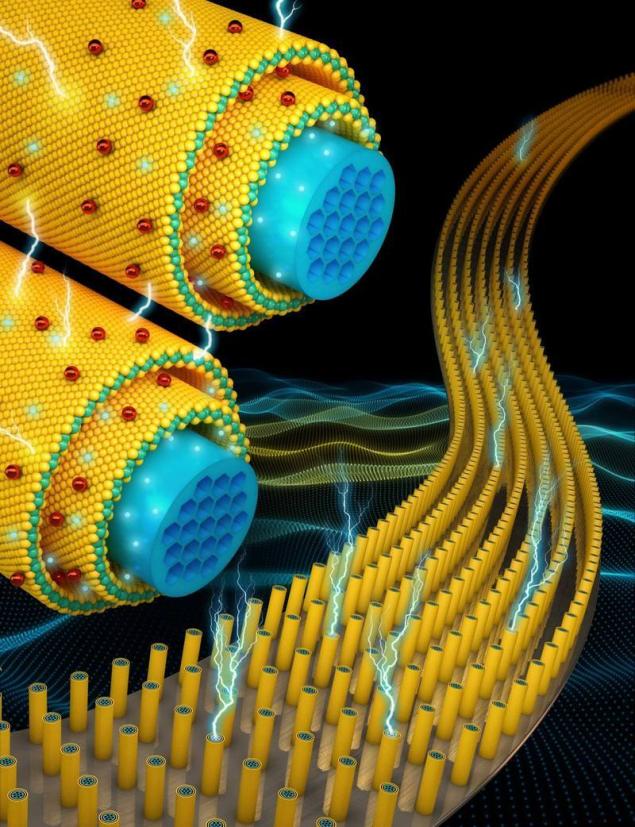
Every smartphone owner faced with yet intractable problem: after about 18 months after purchase, the average battery holds a charge less and less time, and then finally degraded. To solve it, scientists are exploring the potential of nanomaterials to improve supercapacitors. In the future, they can support or even replace batteries in electronic devices. To achieve this quite difficult: to supercapacitor spent as much energy as lithium-ion battery, it must be significantly more than the usual battery.
A team of UCF experimented with the use of a newly discovered two-dimensional materials with a thickness of a few atoms thin films of transition metal dichalcogenides (TMDs). Other scientists have tried to work with graphene and other two-dimensional materials, but is not to say that these attempts have been quite successful.
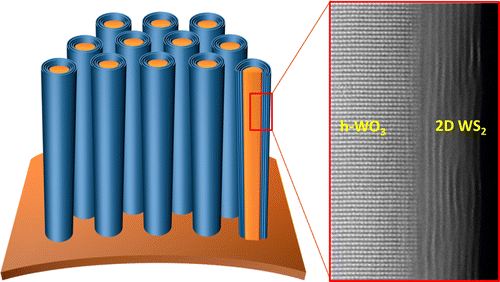
Two-dimensional dichalcogenides of transitional materials is a promising material for capacitive supercapacitors, due to their layered structure and a large surface area. Previous studies of TMDs integration with other nanomaterials with improved electrochemical characteristics first. However, such hybrids did not maintain a sufficient number of recharge cycles. This was due to the breach of structural integrity of materials in places of connection with each other and a chaotic Assembly.
All the scientists, who somehow tried to improve the existing technology, asked the question: "How to combine two-dimensional materials with existing systems?". Then the team from UCF have developed a simple approach of chemical synthesis, which can be used successfully to integrate existing materials with two-dimensional dichalcogenides of metals. This was stated by the study's lead author Eric Jung.
Jung's team has developed a supercapacitor composed of millions of nanometer-wires, coated transition metal dichalcogenides. - With high conductivity ensures a fast electron transfer for quick charging and discharging. Uniform sheath of two-dimensional materials characterized by high energy and power density.
Scientists believe that two-dimensional materials to open up opportunities for elements of energy storage. But until researchers from UCF haven't thought of a way to combine the materials, it was not possible to realize this potential. "Our materials are designed for small electronic devices, has surpassed the usual technology around the world from the point of view of energy density, power density and cyclic stability", said Dr. Nitin Choudhary, who conducted a number of studies.
Cyclic stability determines how many times the battery can charge, discharge and recharge before it will start to degrade. Modern lithium-ion batteries can be recharged about 1.5 thousand times without serious interruption. Recently developed a prototype of supercapacitor can withstand a few thousand cycles. Supercapacitor with two-dimensional sheath are not degraded even after it is recharged 30 thousand times. Now Jung and his team is working to patent a new method.
Nanoconductor can be used in smartphones, electric cars, and in fact – in any electronic devices. They could help manufacturers capitalize on sudden changes of power and speed. Because the supercapacitors are flexible enough they will be suitable for wearable electronics and technology.
Despite all the benefits of a new supercapacitor, the development is not yet ready for commercialization. However, this study may provide a serious impetus for the development of high technology.
P. S. And remember, only by changing their consumption — together we change the world! ©
Source: geektimes.ru/post/282878/
The creators believe: if we replace the usual batteries new nanoconductors, any smartphone fully charged in just a few seconds. The owner may not think every few hours about where he would charge the smartphone: the device will not run out during the week.

Every smartphone owner faced with yet intractable problem: after about 18 months after purchase, the average battery holds a charge less and less time, and then finally degraded. To solve it, scientists are exploring the potential of nanomaterials to improve supercapacitors. In the future, they can support or even replace batteries in electronic devices. To achieve this quite difficult: to supercapacitor spent as much energy as lithium-ion battery, it must be significantly more than the usual battery.
A team of UCF experimented with the use of a newly discovered two-dimensional materials with a thickness of a few atoms thin films of transition metal dichalcogenides (TMDs). Other scientists have tried to work with graphene and other two-dimensional materials, but is not to say that these attempts have been quite successful.

Two-dimensional dichalcogenides of transitional materials is a promising material for capacitive supercapacitors, due to their layered structure and a large surface area. Previous studies of TMDs integration with other nanomaterials with improved electrochemical characteristics first. However, such hybrids did not maintain a sufficient number of recharge cycles. This was due to the breach of structural integrity of materials in places of connection with each other and a chaotic Assembly.
All the scientists, who somehow tried to improve the existing technology, asked the question: "How to combine two-dimensional materials with existing systems?". Then the team from UCF have developed a simple approach of chemical synthesis, which can be used successfully to integrate existing materials with two-dimensional dichalcogenides of metals. This was stated by the study's lead author Eric Jung.
Jung's team has developed a supercapacitor composed of millions of nanometer-wires, coated transition metal dichalcogenides. - With high conductivity ensures a fast electron transfer for quick charging and discharging. Uniform sheath of two-dimensional materials characterized by high energy and power density.
Scientists believe that two-dimensional materials to open up opportunities for elements of energy storage. But until researchers from UCF haven't thought of a way to combine the materials, it was not possible to realize this potential. "Our materials are designed for small electronic devices, has surpassed the usual technology around the world from the point of view of energy density, power density and cyclic stability", said Dr. Nitin Choudhary, who conducted a number of studies.
Cyclic stability determines how many times the battery can charge, discharge and recharge before it will start to degrade. Modern lithium-ion batteries can be recharged about 1.5 thousand times without serious interruption. Recently developed a prototype of supercapacitor can withstand a few thousand cycles. Supercapacitor with two-dimensional sheath are not degraded even after it is recharged 30 thousand times. Now Jung and his team is working to patent a new method.
Nanoconductor can be used in smartphones, electric cars, and in fact – in any electronic devices. They could help manufacturers capitalize on sudden changes of power and speed. Because the supercapacitors are flexible enough they will be suitable for wearable electronics and technology.
Despite all the benefits of a new supercapacitor, the development is not yet ready for commercialization. However, this study may provide a serious impetus for the development of high technology.
P. S. And remember, only by changing their consumption — together we change the world! ©
Source: geektimes.ru/post/282878/


